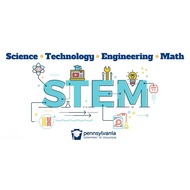Engineering Design Prototype - Simple Machines
(View Complete Item Description)In this activity, students will learn about and apply the Engineering Design Process to solve a problem. While working through the steps of the Engineering Design process they will focus on defining the criteria and constraints of a design problem, learn about scientific principles of simple machines, understand tool and machine safety, and create a prototype solution to the problem. The activity frames the problem around researching, designing, building and testing a prototype that is built with at least one simple machine that will launch a ball into a target. At end of unit students test their prototypes and present their findings of working through the process. ● Project Rubric
Material Type: Activity/Lab, Assessment, Diagram/Illustration, Lecture Notes, Unit of Study




















